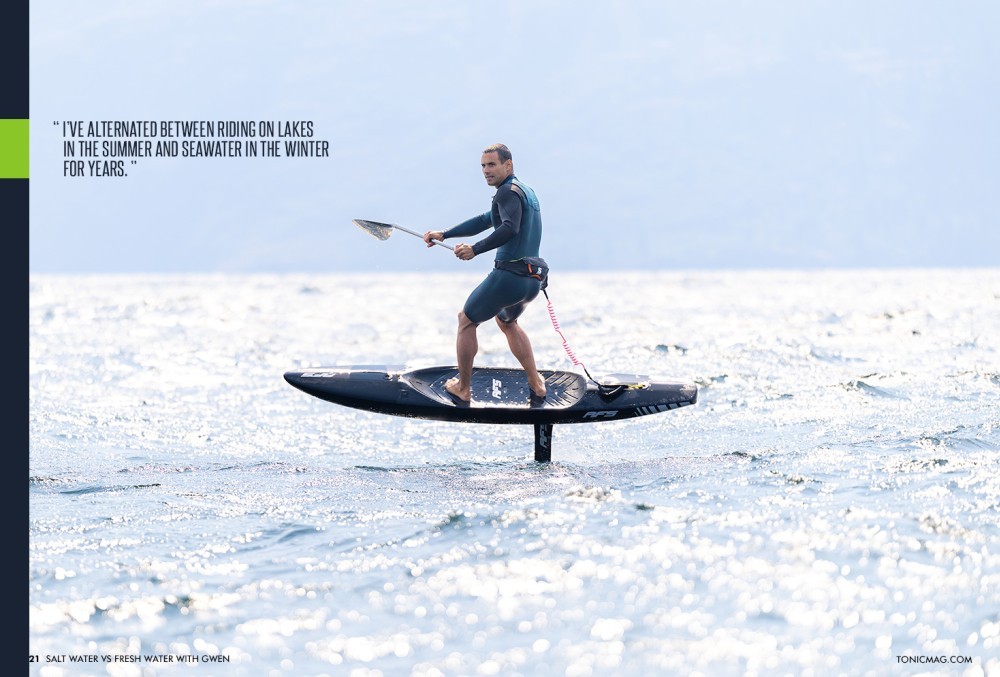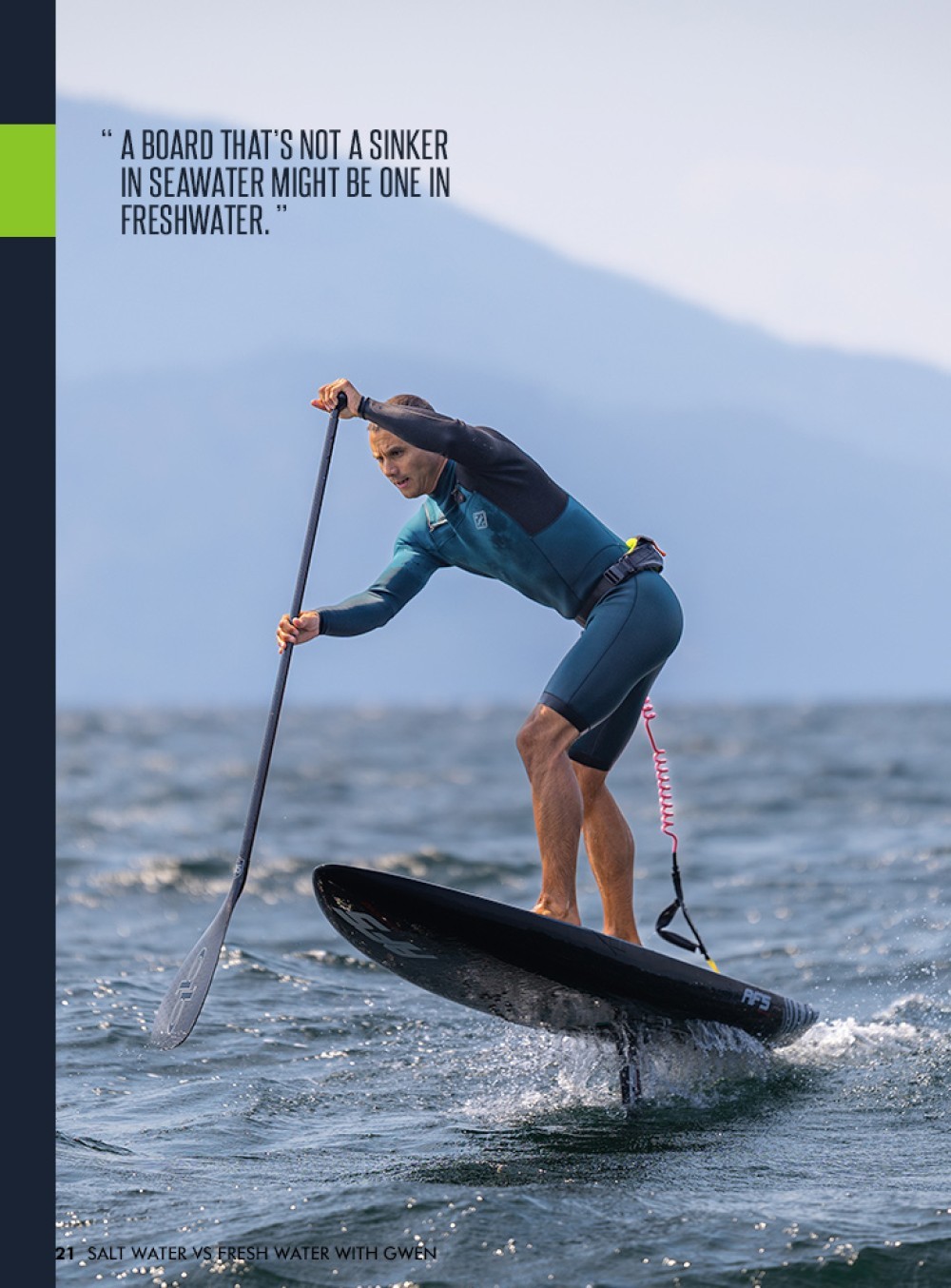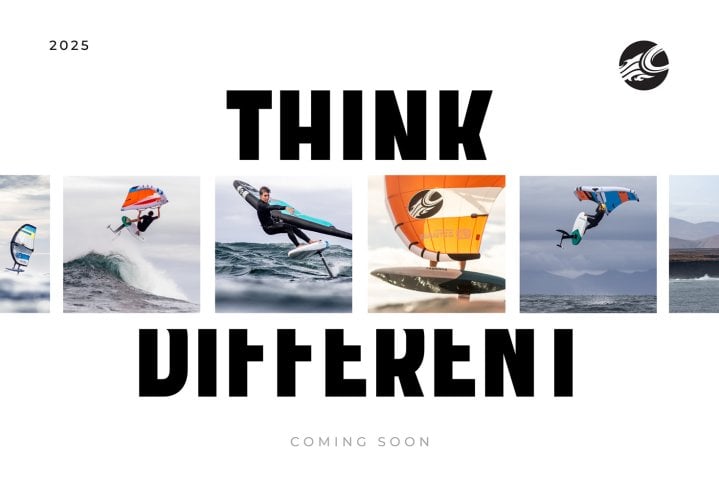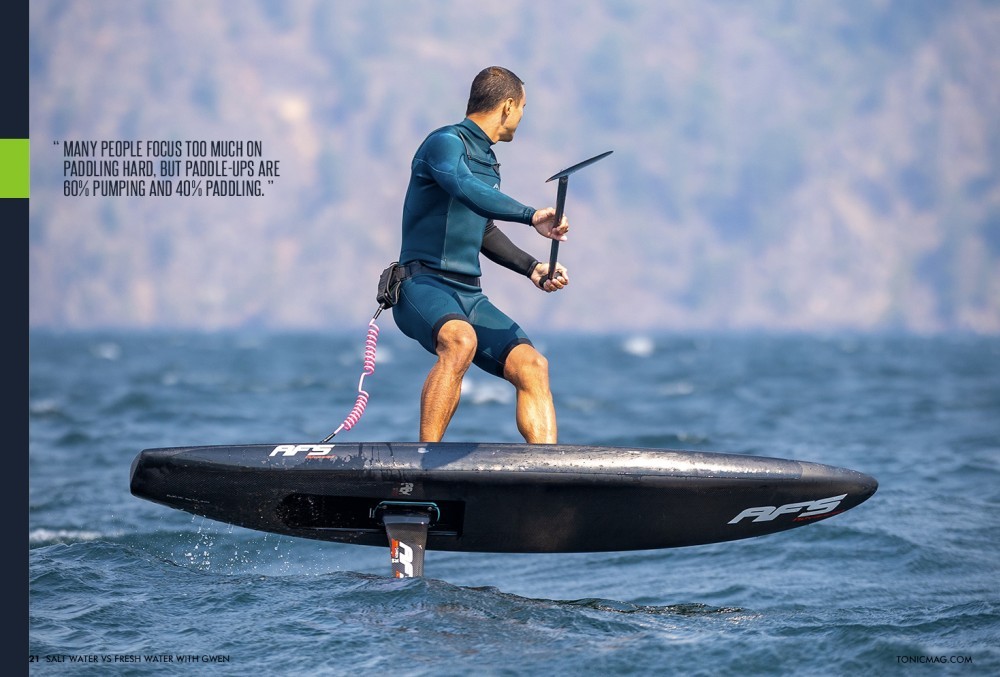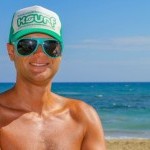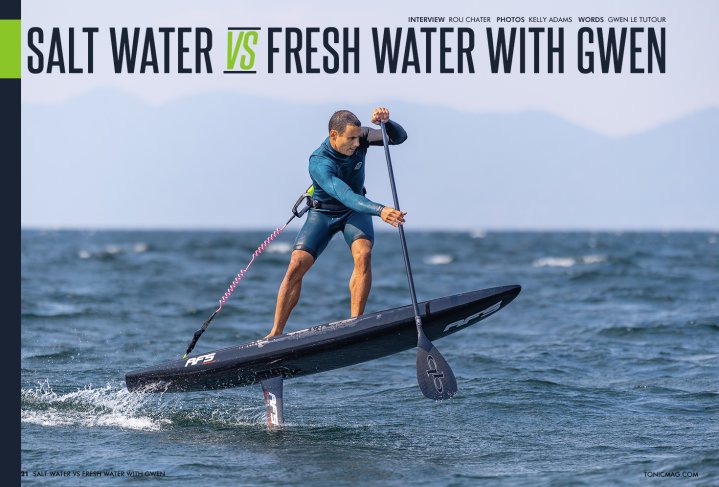
Salt Water vs Fresh Water - Gwen le Tutour
Issue 21 / Tue 20th Aug, 2024
Rou Chater chats to foil master Gwen le Tutour about the differences between saltwater and freshwater paddle-ups. Gwen offers practical advice on adjusting board volume and foil for these conditions and gives tips for mastering paddle-ups! Read the full interview here.
Thanks for taking the time, Gwen. How are things in the States?
All good. We’re experiencing a heat wave, but otherwise, it’s great!
Great to hear! So, I know your time is limited, so let’s dive right in! This piece focuses on your paddle-ups in saltwater. Is that a new discovery for you? Considering your extensive experience in water sports, how does it compare to fresh water?
I had an idea there was a difference, but it wasn’t until I started using very small foils that I realised how significant it was. I’ve alternated between riding on lakes in the summer and seawater in the winter for years. It was always a slight difference, but with smaller foils, the difference felt like night and day. On a larger foil, the difference is subtle—maybe a few extra strokes. But with small foils, it’s a game-changer; it can make or break your ability to paddle up.
That’s really interesting! When you say small foils, how small are we talking?
In the specific example I mentioned, I used an 800, the AFS Pure. Not all foils are created equal—some 800s are easier to get up on than others. The AFS 800 Pure, for instance, is like a race foil: thin with no camber, requiring a lot of speed to generate lift. When I posted the video, people pointed out that the most significant factor might be water temperature and viscosity rather than just the difference between fresh and saltwater. It’s like honey; hot honey flows easier than cold honey. So, the colder the water, the denser it is, making it harder to lift.
That’s a great analogy. So, not just the density but also the temperature affect the viscosity of the water. How does this translate to practical advice for those struggling with smaller boards?
To manage the density difference, you’ll need more volume in your board. This applies to winging, too; a board that’s not a sinker in seawater might be one in freshwater. But regarding viscosity, you might need a foil that generates lift at slower speeds since cold water prevents you from picking up speed as quickly. So, it’s about balancing the two: more volume for density and a foil with more lift for viscosity.
Have you noticed this difference when dock starting as well?
Not really. I think it’s because you’re already at speed when pumping from a dock and using a foil that provides enough lift. I’ve done many dock starting in salt and freshwater without a significant difference. It’s really the small foils where the viscosity difference becomes evident.
So, for dock starting, it’s less about the water type and more about the initial speed and lift of the foil. Interesting. Now, what are your top three tips for someone learning to paddle up on a stand-up foil?
First, use a big foil and a board you can balance on comfortably. If you struggle with balance, generating power will be tough—second, practice pump foiling. Many people focus too much on paddling hard, but paddle-ups are 60% pumping and 40% paddling. So, master your pumping skills first. Lastly, ensure you can pump for at least 20-30 seconds before attempting paddle-ups. If you can’t pump for that long, focus on improving your pumping before tackling paddle-ups.
Those are excellent tips! Finally, what skill level should someone be at before trying paddle-ups? Is there a minimum level of proficiency needed?
Definitely. You should be able to pump foil consistently for 20-30 seconds. If you can do that, you’re ready to try paddle-ups. If not, work on your pumping first.
Thanks for those insights, Gwen!
Thanks for having me. Bye!
By Rou Chater
Rou Chater has been kitesurfing for over twenty years, paddleboarding for the last six years, and was there testing the first wingsurfer from Naish in Tarifa when it arrived on the continent. He is passionate about riding waves and exploring new places. As the publishing editor, he oversees everything at Tonic but also our sister magazines IKSURFMAG and IMB. He's been on the water since he was born and has never looked back, in the winter you'll find him chasing swells in the Caribbean and during the summer he can be found all over Europe at various SUP, Kitesurf and Mountain Bike events getting features for the magazines.




